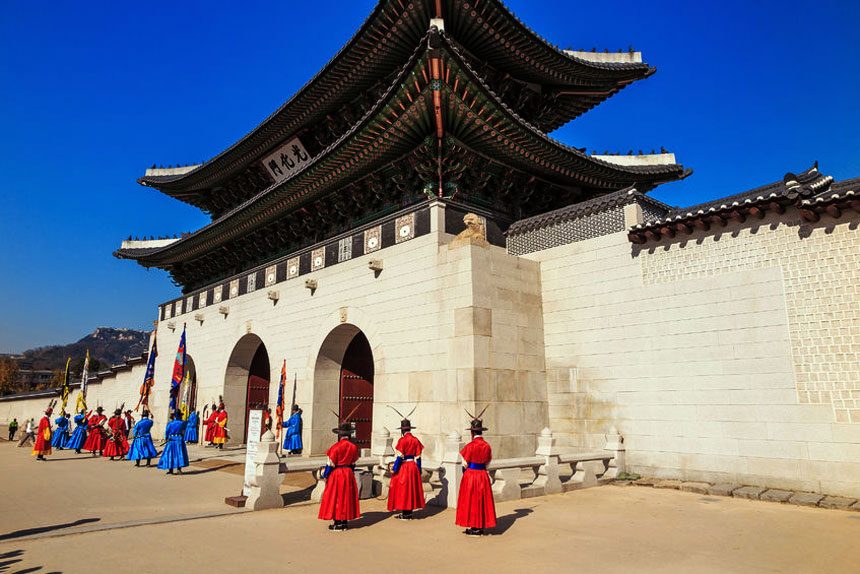
 Image credit: f11photo
Image credit: f11photo What
Gyeongbokgung Palace is the first and main royal palace of the Joseon Dynasty. Its name means “palace greatly blessed by heaven”.
The palace was built in 1395 at an auspicious site according to geomancy. But it had to face many not-so-peaceful events in its own life. The palace was demolished several times and was left in ruins for centuries. Reconstruction efforts commenced in 1867, forming a huge complex with 330 buildings. It was again destroyed during the Japanese occupation in the early 20th century.
Restoration projects continue to this day in an attempt to completely reconstruct Gyeongbokgung Palace to its former status.
Why
Most locals and visitors would agree that Gyeongbokgung Palace is the most beautiful one among five grand palaces the city has to offer. People come to this royal place for its history and culture as well as the grandiose architecture. Free guided tours are available in English, Japanese, and Chinese.
Visiting the palace is like stepping into the set of a Korean historical drama. The experience is complete with locals wearing traditional costumes. Rent a hanbok (traditional Korean costume) and take a photo that looks straight out of history!
Most notable features of the Gyeongbokgung Palace
The changing of the Royal Guard is something really interesting to watch. It draws a lively picture in front of our eyes to tell us exactly how thing happened in the past. Each ceremony will have guards in royal costumes, celebrating shift changing with traditional weapons in hands and music by traditional instruments. You have chance to witness it twice a day at 10:00 and 14:00 (except on Tuedays).
Kyeonghoe-ru is one of the National Treasures of Korea. It is the country’s largest pavilion that is supported by 48 stone pillars. Kyonghoe means “joyful meeting” – an apt name for a spacious pavilion sitting on a lotus pond.
The National Folk Museum is the displaying place of over 4,000 historical artifacts that reflect the way of life of Korean people in the old days. The display gives visitors a close look into Korean agricultural lifestyles.